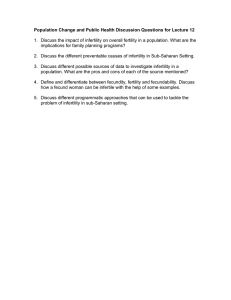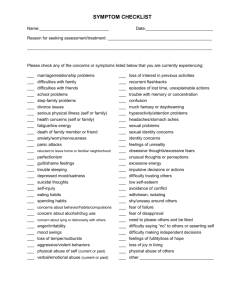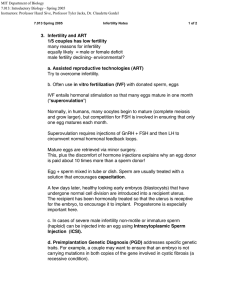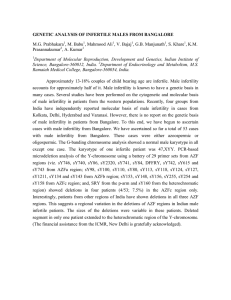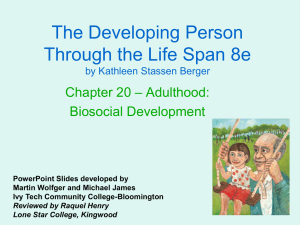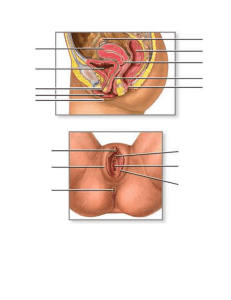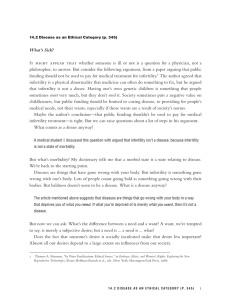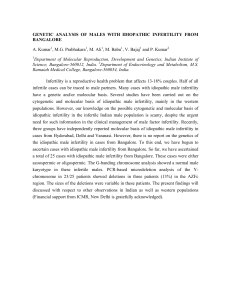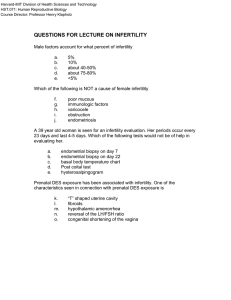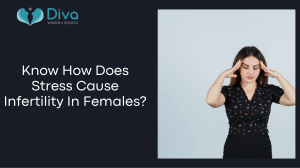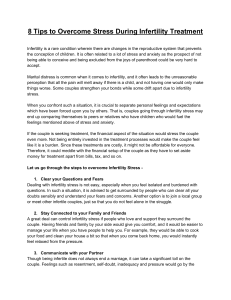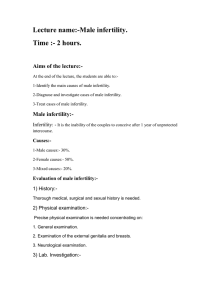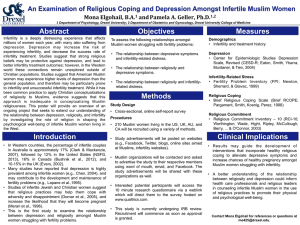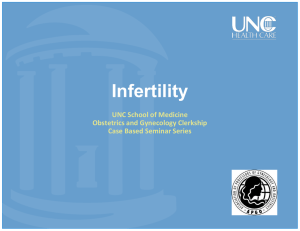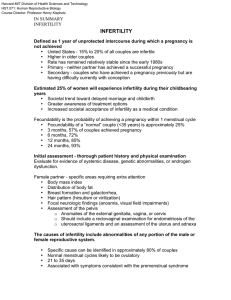Adulthood: Biosocial Development
advertisement
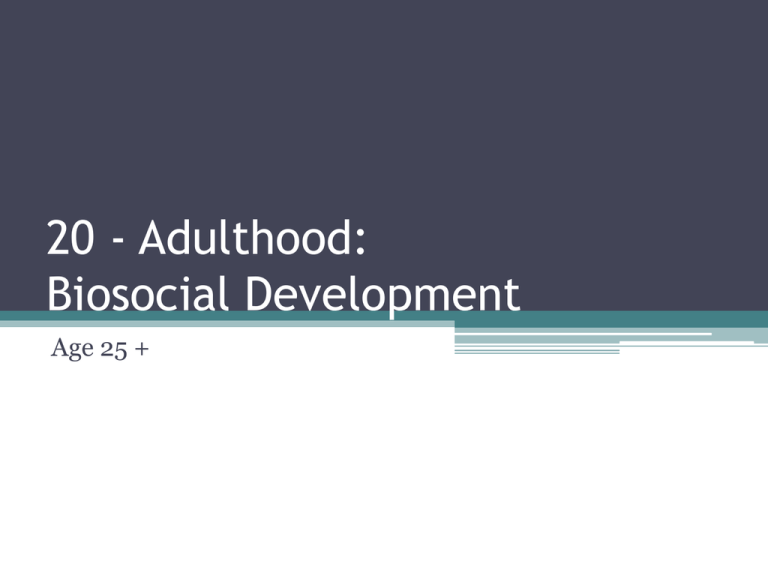
20 - Adulthood: Biosocial Development Age 25 + Senescence • Gradual physical decline related to aging Aging brain • • • • Neurons fire more slowly Brain size decreases Processing takes longer Severe brain loss due to: ▫ ▫ ▫ ▫ Drug use Poor circulation Viruses Genes Physical appearance • • • • • • Age 30-Skin becomes thinner & less flexible Age 60 – All faces are wrinkled Hair turns gray & thinner “Middle-age spread” appears Muscles weaken Height decreases ▫ Natural collapse of vertebrae in spine • Effects are less if you exercise Sense organs • Vision ▫ Peripheral vision narrows ▫ Color vision shifts (vivid to faded more quickly) ▫ Farsightedness increases • Hearing ▫ Loss not apparent until after 60 Sexual-Reproductive System • Sexual responsiveness ▫ Arousal is slower ▫ Orgasm takes longer • All ages enjoy sex • Men & women – most likely “extremely satisfied” with sex if in a committed, monogamous relationship Fertility • 15% of all couples are infertile • 40’s = half are infertile, half risk complications Causes of infertility • Males ▫ Responsible for 1/3 of infertility ▫ Age, radiation, drugs, stress, drug abuse, alcoholism cigarette smoking Reduces sperm number, shape, and motility • Females ▫ ▫ ▫ ▫ Responsible for 1/3 of infertility 1/3 of infertility is a mystery Age, diseases, smoking, esteem dieting, obesity Pelvic inflammatory disease (PID) – Can block fallopian tubes Treatments of infertility • Assisted reproductive technology (ART) ▫ Overcome low sperm count & blocked fallopian tubes • In Vitro fertilization (IVF) ▫ Eggs (ova) removed and fertilized with sperm in the laboratory ▫ After fertilized cells (Zygotes) have divided several times – inserted into the woman’s uterus Menopause • • • • Around age 50 – Menstrual periods cease Ovulation stops Estrogen, progesterone & testosterone drops Hormone replacement therapy (HRT) ▫ ▫ ▫ ▫ Usually estrogen & progesterone Minimizes menopausal symptoms Reduces risk of osteoporosis Involves health risks Not recommended as much today Male menopause (Andropause) • Drop in testosterone ▫ Reduced sexual desire, erections, & muscle mass ▫ Effectiveness of HRT is questionable Health habits and age ▫ Diseases and chronic conditions are strongly affected by lifestyle ▫ Drug abuse Abuse of illegal drugs decreases Abuse of prescription drugs increases ▫ Tobacco Lung cancer = leading cause of cancer deaths (including women) in North America Declined in U.S. Rising in developing nations Affected by social norms, laws, & advertising Health habits & age (Cont.) • Drinking ▫ In moderation Reduces coronary heart disease and strokes Increased “good” cholesterol (HDL) Reduces “Bad” cholesterol (LDL) ▫ Heavy drinking Increases violent death Implicated in 60 diseases ▫ Drinking alcohol is not a health strategy • Overeating ▫ Excess weight increases every chronic disease ▫ E.g. diabetes Health habits & age (Cont.) • U.S. = Highest rate of obesity and diabetes • Metabolism decreases by 1/3 • Genetics – Correlates with weight and diabetes ▫ Cultural influences are more important • Inactivity – Correlates with almost every unhealthy condition Stress • Dealing with stress ▫ Problem –focused coping Solve the problem causing the stress Used more by men ▫ Emotion focused coping Change your feelings about the situation causing the stress Used more by women • High stress increases the risk of disease Measuring health • Mortality = Death ▫ Number of deaths each year per 1,000 people in a population • Morbidity = Disease ▫ The rate of physical, emotional and fatal diseases in a population Income and health • Well-educated, financially secure adults (with high socioeconomic status – SES) live longer ▫ Healthy habits ▫ Better housing ▫ Better medical care

